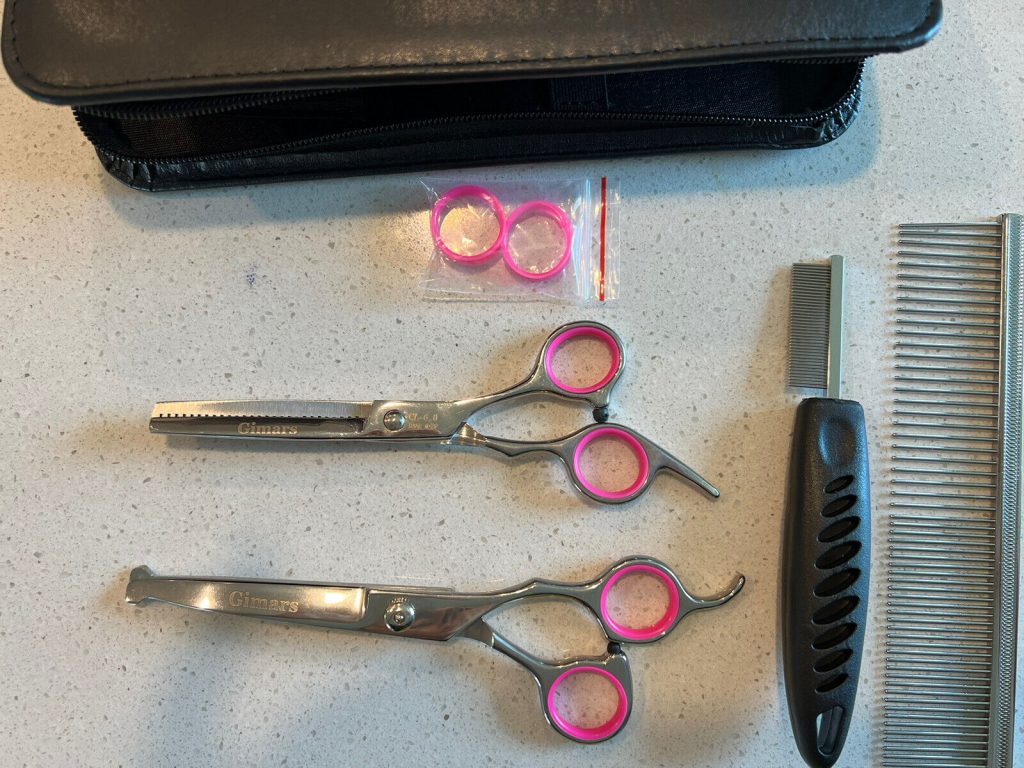Pets have become integral to countless households, with 66% of American homes owning at least one furry friend. While the companionship and joy that pets bring are undeniable, they also come with responsibilities. Among these responsibilities, pet grooming stands out as a top priority.
Pet grooming encompasses various tasks, from bathing and nail trimming to coat brushing and styling. Similar to how personal grooming is crucial for humans, grooming plays a vital role in the health and well-being of your beloved pets.
The pet grooming market has witnessed remarkable growth, reflecting the significance of this industry. According to experts, the market has reached a massive $1.3 billion by the end of 2022. This growth was driven by pet owners’ increasing desire to provide their furry companions with the best care possible.
One of the essential aspects of pet grooming is fur maintenance. Regularly trimming and shaping a pet’s coat enhances its appearance, prevents matting, and keeps its skin healthy. To accomplish this effectively, sharpening grooming scissors becomes indispensable. Sharp scissors ensure precision and efficiency in trimming, enabling pet owners to achieve salon-quality results in the comfort of their homes.
Importance of Sharpening Grooming Scissors

Regularly sharpening grooming scissors is of utmost importance for maintaining their cutting performance. Dull scissors can lead to frustrating grooming experiences, resulting in uneven cuts and potential discomfort for both the groomer and the pet.
Sharp scissors offer a multitude of benefits when it comes to pet grooming. Firstly, they provide clean and precise cuts, allowing for neat and professional-looking results. Whether it’s trimming fur, shaping a hairstyle, or tidying up the coat, sharp scissors enable groomers to achieve the desired outcome with ease and accuracy.
Moreover, sharp scissors reduce the risk of hair pulling or tugging. This is particularly crucial when dealing with pets that may have sensitive skin or easily get agitated during grooming sessions. By smoothly gliding through the fur, sharp scissors ensure a more comfortable experience for the pet, minimizing any potential discomfort or pain.
Additionally, maintaining sharp grooming scissors is essential for the well-being of the groomer. Dull scissors can require more force to cut through the hair, resulting in strain and fatigue on the hand and wrist. In contrast, sharp scissors allow for effortless and efficient grooming, reducing the physical strain on the groomer and enabling them to maintain better grooming habits.
Steps to Follow While Sharpening Grooming Scissors
When sharpening grooming scissors, following the right steps is crucial to achieving optimal results. Here’s a step-by-step guide to help you sharpen your grooming scissors effectively:
- Determine the sharpening method: Various methods are available for sharpening grooming scissors. One option is to use sharpening stones, which require wetting the stone and gently sliding the scissor blades across it in a controlled motion. Another method involves honing rods, where you stroke the scissor blades along the rod’s surface to realign the edges. Alternatively, you can seek professional sharpening services, especially if you’re unsure or prefer a hassle-free approach.
- Gather the necessary tools: Depending on the chosen sharpening method, gather the appropriate tools. This may include sharpening stones, honing rods, lubricating oil, or cloth for wiping the blades.
- Determine the correct angle: Maintaining the proper angle is vital for achieving an even and sharp edge. Typically, a 30 to 45-degree angle is recommended for grooming scissors. Refer to the manufacturer’s instructions or consult professional sharpeners for specific angle recommendations.
- Start sharpening: If using sharpening stones, wet the stone and hold the scissors at the correct angle. Gently slide the scissor blades across the stone, from the base to the tip, maintaining a consistent motion. Repeat this process several times, evenly sharpening both blades. For honing rods, stroke the scissor blades along the rod’s surface, again starting from the base to the tip, maintaining the proper angle and consistent pressure.
- Test the sharpness: After sharpening, test the scissors’ sharpness by making a few gentle cuts on a piece of paper. They are properly sharpened if the blades glide through smoothly and without snagging. If needed, repeat the sharpening process until the desired sharpness is achieved.
- Seek professional sharpening service: For those who prefer professional assistance or lack the confidence to sharpen their scissors, consider seeking help from a reputable sharpening service. They have the expertise and specialized equipment to effectively restore your scissors’ sharpness.
Safety Precautions While Sharpening Grooming Scissors
While sharpening grooming scissors, it is crucial to prioritize safety to prevent accidents and avoid any damage to the scissors. Here are some essential safety precautions to keep in mind:
- Know your limits: If grooming appears to be too complicated or time-consuming, don’t hesitate to seek professional assistance. Especially if you’re showing signs of aging, it might be best to opt for help to ensure safety. Grooming for seniors can be tedious, and no one should feel pressured into taking on a job that is too difficult.
- Wear protective gear: Prioritize your safety by wearing gloves and eyewear. It helps protect your hands and eyes from injuries, especially when handling sharp objects like scissors.
- Handle with care: When sharpening grooming scissors, ensure a firm and secure grip on the scissors at all times. This reduces the risk of dropping them or accidentally injuring yourself or others nearby. Maintain a controlled and steady hand motion during the sharpening process.
- Use a stable surface: Place the sharpening tools on a stable and non-slip surface to prevent any accidental movement or slips during sharpening. This helps maintain control and stability while working with the scissors.
- Follow manufacturer’s guidelines: Familiarize yourself with the manufacturer’s guidelines or instructions for sharpening your specific grooming scissors. Different scissors may have varying recommendations regarding sharpening techniques and angles. Adhering to these guidelines ensures optimal results and prevents any potential damage to the scissors.
- Keep distractions away: While sharpening scissors, minimize distractions in your surroundings. Ensure that you have a clean and focused environment to maintain concentration during the sharpening process. This reduces the chances of accidents or errors that can occur due to distractions.
- Store safely when not in use: After sharpening, store the grooming scissors in a secure and designated location, away from the reach of children or pets. It is among the most crucial grooming tips for travelers, as doing so helps prevent accidental injuries and ensures the longevity of the sharpened blades.
Cleaning and Maintenance: Grooming Scissors

Regular cleaning and maintenance are vital for grooming scissors to ensure their optimal performance and longevity. Following proper cleaning and maintenance routines is essential for maintaining hygiene and preventing the build-up of dirt, hair, or rust. Here are some grooming tips on how to keep your scissors clean and well-maintained:
- Clean after each use: After each grooming session, make it a habit to clean the scissors thoroughly. Use a soft cloth or tissue to wipe off any hair, debris, or residue on the blades and handles. This helps prevent the accumulation of dirt and keeps the scissors in good condition.
- Sanitize when necessary: Depending on the nature of the grooming task and the animals involved, it may be necessary to sanitize the scissors to ensure proper hygiene. Use a disinfectant solution recommended for grooming tools, following the instructions provided. This helps eliminate bacteria or germs that may be present on the scissors.
- Avoid harsh cleaning agents: When cleaning grooming scissors, avoid using harsh chemicals or abrasive substances that can damage the blades or handles. Opt for mild soapy water or specialized scissor cleaning solutions that are gentle yet effective in removing dirt and residue.
- Dry thoroughly: After cleaning or sanitizing the scissors, ensure they are thoroughly dried before storing them. Moisture can lead to rust or corrosion, compromising the scissors’ performance. Use a clean towel or allow the scissors to air-dry completely before storing them.
- Lubricate regularly: Lubrication is essential to keep the scissors functioning smoothly. Apply a small amount of scissor lubricant or oil specifically designed for grooming scissors to the pivot area. This helps maintain proper movement and reduces friction between the blades, ensuring efficient and comfortable grooming.
- Store properly: When not in use, store the grooming scissors in a clean and dry environment. Ideally, keep them in a protective case or sheath to prevent accidental damage or contact with other objects that may dull the blades.
Regular sharpening and maintenance of grooming scissors are essential for achieving precise cuts, reducing discomfort, and ensuring efficient grooming sessions. By prioritizing the sharpening and care of these tools, pet owners can enjoy professional-level results and prolong the lifespan of their grooming scissors. Make it a habit to sharpen and maintain your scissors regularly, and you’ll reap the benefits of enhanced grooming experiences for you and your furry companions.
Frequently Asked Questions
How often should I sharpen my grooming scissors?

It is recommended to sharpen grooming scissors every 2-3 months or more frequently if they start to feel dull.
Can I sharpen my grooming scissors at home?
Yes, you can sharpen grooming scissors at home using sharpening stones or honing rods. However, if unsure, professional sharpening services are also available.
What are the signs that indicate my grooming scissors need sharpening?
Signs that indicate grooming scissors need sharpening include difficulty cutting smoothly, blades snagging or folding hair, the increased effort required to cut, and noticeable dullness or bluntness of the blades.
What tools and materials do I need to sharpen grooming scissors?
To sharpen grooming scissors, you will need sharpening stones or honing rods, lubricating oil, a soft cloth or tissue for cleaning, and a sharpening guide for maintaining the correct angle during sharpening.
What is the best technique to sharpen grooming scissors?
The best technique to sharpen grooming scissors involves maintaining a consistent angle (around 30-45 degrees), using smooth and controlled motions, and evenly sharpening both blades. Practice and gradual pressure can help achieve optimal results.
How do I maintain the sharpness of my grooming scissors after sharpening?
To maintain the sharpness of grooming scissors, regularly wipe them clean after use, lubricate the pivot area, store them in a dry and safe place, and avoid using them on materials that can dull the blades.



